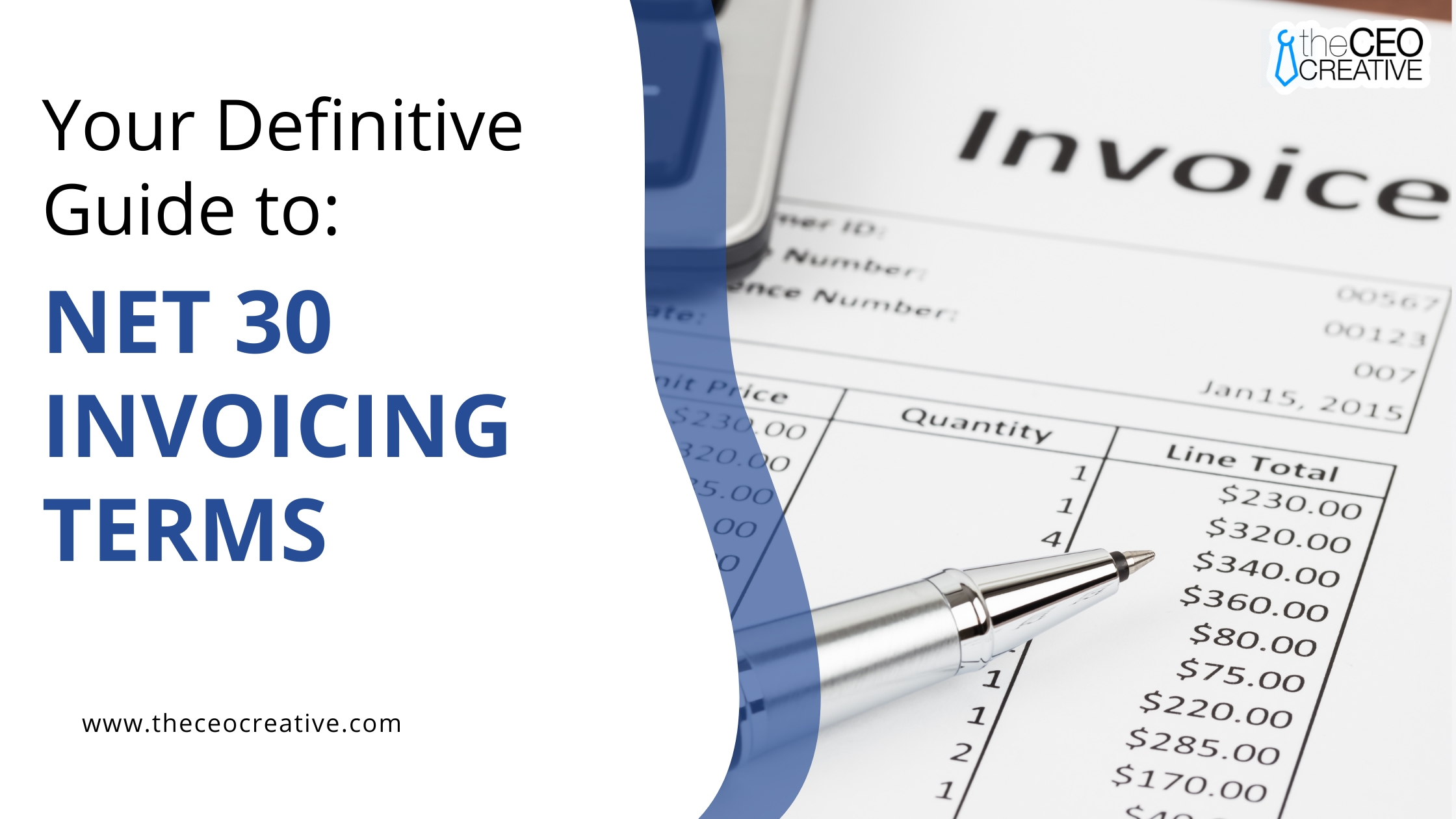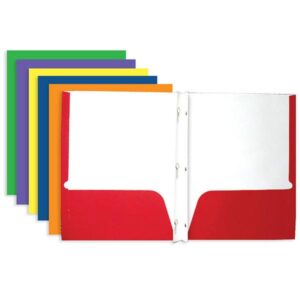Navigating the terrain of business finances requires a deft understanding of invoicing terms, particularly the widespread and crucial “Net 30” term. This particular invoicing option offers a balanced approach to managing cash flow while maintaining robust client relationships.
Delving into what Net 30 invoice entails and its implications on your business will secure a more transparent and efficient billing foundation and foster a consistently healthy financial workflow.
Whether you’re a budding entrepreneur or a seasoned business owner, comprehending and applying Net 30 terms effectively can lead to smoother operations and ultimately, enhanced business growth.
Understanding Net 30 Invoicing Terms
Definition and Explanation
Net 30 invoicing refers to a payment agreement where the total amount due on an invoice must be paid within 30 days of the invoice date.
This term is a staple in business-to-business (B2B) transactions, helping to clarify payment expectations and streamline transaction processes across various industries.
The “Net” specifies that the payment of the invoice is due in full, and the “30” denotes the time frame – 30 calendar days. This structure not only simplifies the payment process but also sets clear guidelines, fostering a transparent relationship between buyers and sellers.
How Net 30 Terms Work?
The workings of Net 30 terms are straightforward. Upon completing a service or delivering goods, a seller issues an invoice to the buyer, stating the Net 30 payment terms. The due date for the payment is then calculated by adding 30 days to the invoice date.
During this period, often termed the grace period, the buyer is expected to settle their debt in full. If the payment isn’t made within these 30 days, it’s considered late, and the seller may impose penalties or late fees as specified in their payment conditions. This systematic approach not only aids in maintaining cash flow for the seller but also in building trust and consistency in business transactions.
Benefits of Using Net 30 Invoicing
Improved Cash Flow
Although Net 30 terms provide buyers a 30-day credit period, this setup also supports more predictable and consistent cash flow for sellers. By stipulating a specific timeframe for payments, businesses can better plan and predict their revenue streams. This is particularly useful for small businesses and startups, where effective cash flow management is critical for maintaining daily operations and fostering company growth.
Enhanced Vendor Relationships
By offering Net 30 payment terms, businesses demonstrate a commitment to convenient and considerate payment practices. This flexibility can be particularly appealing to vendors and suppliers, helping to cement trust and reliability in business interactions.
In return, vendors might offer better service terms, priority processing, or even discounts. Such enhanced relationships are beneficial as they contribute to more favorable business dealings and potentially lower costs of goods and services.
Building Business Credit
Regular, timely handling of Net 30 invoices can significantly boost a business’s credit rating. A strong credit profile affords numerous advantages, like improved access to financing options, preferential interest rates, and increased credibility with lenders and suppliers.
Business credit scores are vital for attracting new partnerships and opportunities, thus playing a crucial role in broader business development and expansion strategies.
In conclusion, Net 30 invoicing isn’t just a billing term; it’s a strategic tool that when utilized effectively, can streamline financial operations, improve vendor relationships, and bolster business credit.
This approach not only aids in managing revenue and expenditures effectively but also sets a foundation for sustainable business growth and financial health.
Whether you’re just starting out or looking to enhance your financial strategies, understanding and implementing Net 30 invoicing can lead to significant business advantages.
Net 30 Invoicing for Different Business Sizes
Advantages and Challenges for Small Businesses
Net 30 invoicing is a popular choice among small businesses for enhancing their financial strategies and attracting larger clients who expect longer payment windows. This practice can provide a competitive edge in crowded markets and help establish predictable payment schedules which are crucial for effective budgeting.
However, extending credit can also present challenges. Small firms might struggle with cash flow gaps due to the 30-day wait for payment, increasing the risk of cash shortages, especially when payments are delayed.
Additionally, the use of invoice financing to bridge these gaps can introduce additional costs. To navigate these waters, small businesses benefit from clear communication of payment terms, conducting credit checks, implementing late payment policies, and potentially offering incentives for early payment to encourage timely remittances.
Financial Strategies and Benefits for Large Corporations
For larger corporations, Net 30 is less about immediate financial need and more about leveraging terms to optimize financial strategies. Extending Net 30 terms can significantly enhance working capital, allowing these companies to reinvest in growth initiatives like R&D or expansion efforts.
Moreover, these terms can strengthen supplier relationships, providing leverage to negotiate better pricing or favorable conditions. The predictability in cash flow facilitated by Net 30 also aids in smoothing out financial reporting, which is particularly crucial for publicly traded companies needing to demonstrate stability to investors.
Case Studies of Large Corporations Using Net 30
Prominent companies like Apple, Walmart, and Procter & Gamble utilize Net 30 invoicing strategically. Apple uses it to maximize working capital, maintaining financial flexibility and a formidable liquidity position.
Walmart leverages its massive purchasing power to negotiate extended payment terms that often surpass Net 30, benefiting from stretched cash flow periods.
Procter & Gamble integrates these terms into their supply chain management strategies, balancing timely payments with cash flow efficiencies. These examples underline how large corporations can utilize Net 30 effectively as part of sophisticated procurement and financial strategies.
Implementing Net 30 Invoicing
Setting Up Net 30 Terms with Vendors
Setting up Net 30 terms typically involves negotiations emphasizing the mutual benefits such as potential for increased order volumes and sustained business relationships.
Clarity is crucial—ensure that the terms are explicitly mentioned in contracts and purchase orders. This clear communication prevents future conflicts and aligns both parties on expectations concerning payment timelines and penalties for late payments.
Managing Net 100 Invoices
Effective management of Net 30 invoices is crucial for maintaining favorable cash flows and preventing late payments. Businesses should leverage technology to streamline this process; invoicing software can automate bill generation, track payment statuses, and send reminders, enhancing efficiency and reducing errors.
Tools like QuickBooks Online and FreshBooks also offer functionalities tailored to managing Net 30 invoices, allowing businesses to keep accurate records and timely follow-ups with clients.
Financial Impact of Net 30 Invoicing
Adopting Net 30 inherently delays payment receptions, which can strain a business’s cash flow, particularly those with limited cash reserves. However, this can be managed with strategic planning and tools. Budgeting and forecasting become essential to anticipate and bridge potential cash flow gaps.
Moreover, businesses might consider securing a line of credit or exploring invoice discounting to convert sales into cash faster. Implementing staggered invoicing and encouraging early payments with discounts can also alleviate some of the financial pressures associated with Net 30 terms.
Additionally, consistently fulfilling these invoices on time helps build a robust business credit profile, potentially leading to more favorable borrowing terms and business opportunities.
Best Practices for Net 30 Invoicing
Creating Effective Invoices
Crafting clear, concise, and accurate invoices is crucial when implementing Net 30 terms. Here are a few keys to creating effective invoices:
– Invoice Number: Ensure each invoice has a unique identifier to avoid confusion and streamline the payment process.
– Date and Payment Terms: Clearly state the invoice date and that payment is due within 30 days (Net 30).
– Detailed Description: Include a complete description of the goods or services provided, along with quantities and unit prices.
– Total Amount Due: Sum up all the charges, list any applicable taxes, and state the total amount due.
– Payment Instructions: Specify how you wish to receive payment, including payment methods accepted.
– Contact Information: Provide your contact details for any queries. This transparency builds trust and can expediate resolution of issues.
Effective invoicing sets clear expectations, prevents misunderstandings, and helps ensure that payments are received on time.
Ensuring Timely Payments
To mitigate the risk of late payments with Net 30 terms, consider these strategies:
– Send Reminders: Utilize automated systems to send out reminders a few days before the payment is due.
– Flexible Payment Options: The more ways a client can pay, the easier it is for them to do so promptly.
– Build Relationships: Regularly engage with your clients to build relationships that encourage them to prioritize your invoices.
– Early Payment Incentives: Offering a small discount for early payment can motivate clients to pay sooner rather than later.
By encouraging better payment habits, you streamline your cash flow and reduce the need for chasing payments.
Handling Late Payments
Addressing late payments effectively is crucial for maintaining cash flow and business relationships. Here’s how:
– Immediate Follow-up: Contact the client shortly after the invoice goes past due to remind them of their obligation.
– Set Late Fees: Clearly communicating the imposition of late fees for overdue payments can act as a deterrent against delays.
– Payment Plans: If a client is struggling financially, arranging a payment plan can be a mutually beneficial solution.
– Legal Action: As a last resort, legal action can be considered if no resolution can be found. Ensure you communicate this policy upfront.
Proactively managing late payments helps maintain steady cash flow and discourages delinquent behavior.
Leveraging Net 30 Invoicing for Business Growth
Using Net 30 to Scale Your Business
Net 30 terms can be strategically used not just for managing cash flow but also for scaling your business operations. They can:
– Improve Supplier Relationships: Demonstrating reliability in payment can help negotiate better terms or discounts.
– Attract and Retain Customers: Customers likely prefer doing business with entities that offer convenient payment terms.
– Free Up Working Capital: By delaying outflows of cash, you can utilize these funds for critical business activities, such as marketing or expansion.
Adopting Net 30 wisely can thus support broader business growth strategies and contribute to long-term success.
Innovative Uses of Net 30 Invoicing
Business innovation can be supported by adaptable payment terms like Net 30. Some inventive uses include:
– Subscription-based Models: Offer clients the ability to pay in instalments, attracting those who might shy away from a lump sum payment.
– Loyalty Rewards: Implement programs that reward timely payments with bonuses or discounts on future purchases.
– Dynamic Pricing Models: Adjust prices based on the payment term selected, potentially charging a premium for longer credit periods.
Such creative strategies can open new revenue streams and increase customer satisfaction.
The CEO Creative’s Role in Net 30 Invoicing
The CEO Creative, an entity supporting entrepreneurs, plays an essential role in facilitating effective Net 30 invoicing by:
– Offering Custom Solutions: Tailored invoicing tools that cater specifically to the needs of small businesses and entrepreneurs.
– Providing Educational Resources: Helping business owners understand the benefits and responsibilities associated with Net 30 terms.
– Enhancing Visibility: Through platforms that promote reliability and trust between merchants and their clients.
In conclusion, Net 30 is more than just a payment term; it is a versatile tool that, when utilized effectively, can boost your business’s operation, build lasting relationships with clients, and support strategic business growth.
The CEO Creative’s Role in Net 30 Invoicing

The CEO Creative, known for fostering innovation and growth among creative entrepreneurs, significantly impacts the use of Net 30 invoicing. Leveraging this term effectively can be transformative, enhancing the financial flexibility and operational fluency of businesses.
Through tailored invoicing solutions and robust support systems, The CEO Creative equips businesses to manage their finances adeptly while encouraging stronger business relationships and improved credit profiles.
Tailored Invoicing Solutions
Understanding that one size does not fit all, The CEO Creative offers customized invoicing software designed specifically for creative professionals. This technology allows businesses to produce professional, branded invoices efficiently.
Moreover, recognizing the diverse financial situations of different clients, The CEO Creative provides flexible payment terms, including Net 30, which helps businesses cater to their client’s needs by offering an extended payment period.
This not only fosters client loyalty but also enhances client acquisition by making services more financially accessible to a broader audience.
Comprehensive Support for Businesses
Beyond merely facilitating transactions, The CEO Creative enriches entrepreneurs with a comprehensive support system. This includes access to a vast repository of resources like educational articles, templates, and operational tools, all tailored to assist entrepreneurs in various business aspects.
Such support ensures that businesses not only survive but thrive by optimizing their operational strategies, including effective Net 30 invoicing. The CEO Creative thus acts not just as a service provider but as a growth catalyst in the entrepreneurial landscape, fostering a community of well-equipped, financially savvy businesses.
Enhancing Business Credit
Utilizing Net 30 invoicing through the platforms and services provided by The CEO Creative can significantly bolster a company’s creditworthiness. Consistent and timely payments of Net 30 invoices are reported to major credit bureaus, enhancing the business credit profile. A good credit score, facilitated by effective use of Net 30 terms, can lead more financial institutions and suppliers to trust and invest in the business.
Additionally, The CEO Creative helps businesses to understand and navigate the complexities of credit building, offering guidance on maintaining a strong credit score which is indispensable for securing favorable loan terms and business opportunities.
In conclusion, The CEO Creative’s instrumental role in promoting Net 30 invoicing offers businesses not just the means to manage their finances but also paves the way for sustainable growth and robust financial health.
By integrating customized solutions with comprehensive entrepreneurial support, The CEO Creative empowers businesses to leverage Net 30 invoicing effectively, making it a cornerstone of their financial strategies.
Conclusion
Net 30 invoicing is a versatile tool that can significantly impact your business’s financial health and growth trajectory. By understanding its intricacies, implementing best practices, and strategically leveraging its advantages, you can optimize cash flow, build stronger relationships with vendors and clients, and establish a solid foundation for long-term success.
Recap of Key Points
– Net 30 invoicing offers a 30-day payment window for customers, balancing their needs with your business’s cash flow requirements.
– It benefits businesses of all sizes, from small startups seeking to attract larger clients to established corporations optimizing working capital.
– Clear communication, diligent invoice management, and proactive strategies for handling late payments are crucial for maximizing the benefits of Net 30.
– Net 30 invoicing can be a valuable tool for building business credit and accessing better financing options.
– Technology plays a pivotal role in streamlining the Net 30 invoicing process and unlocking its full potential.
– Creative applications of Net 30 beyond traditional invoicing can open new avenues for growth and innovation.
Final Thoughts on Net 30 Invoicing for Business Success
Net 30 invoicing is not merely a payment term; it’s a strategic instrument that, when wielded effectively, can empower your business to thrive in today’s competitive landscape. By embracing its flexibility, understanding its nuances, and aligning it with your overall financial goals, you can unlock new opportunities, foster stronger relationships, and pave the way for sustained success in the years to come.






